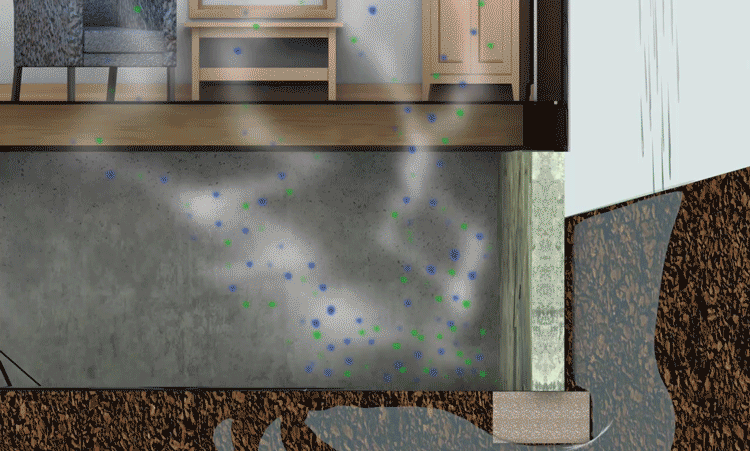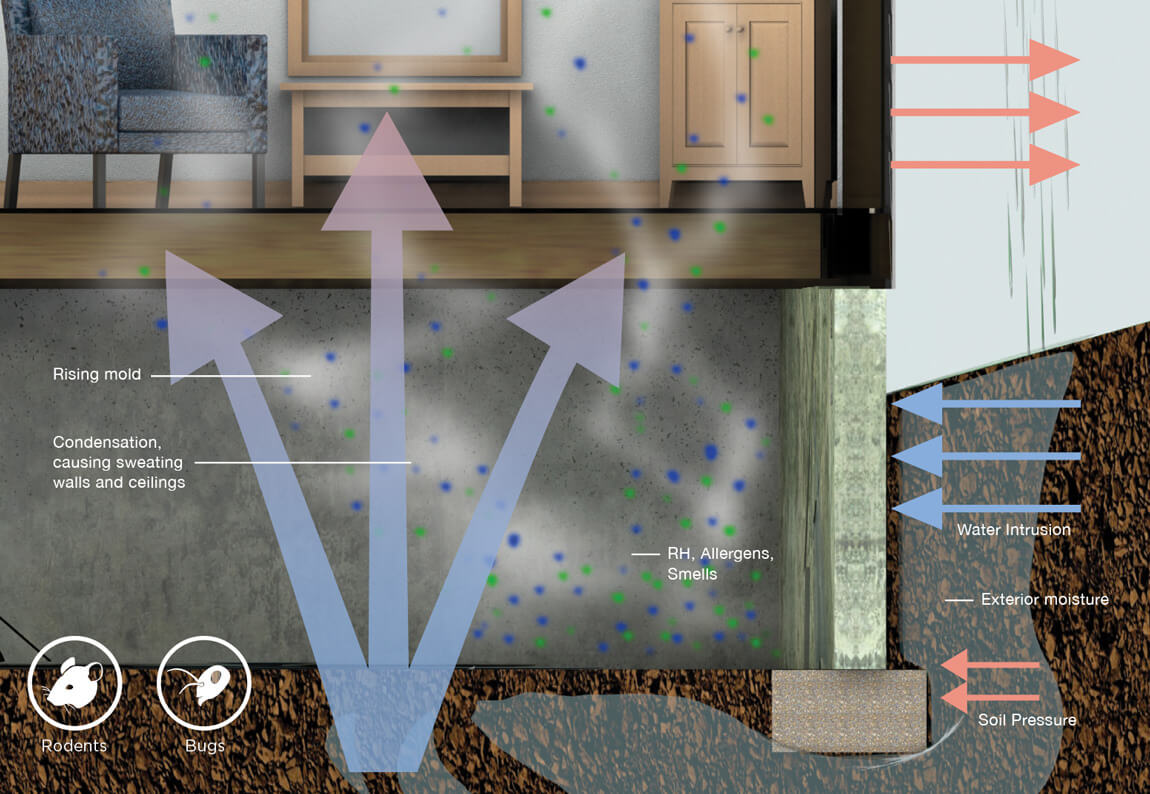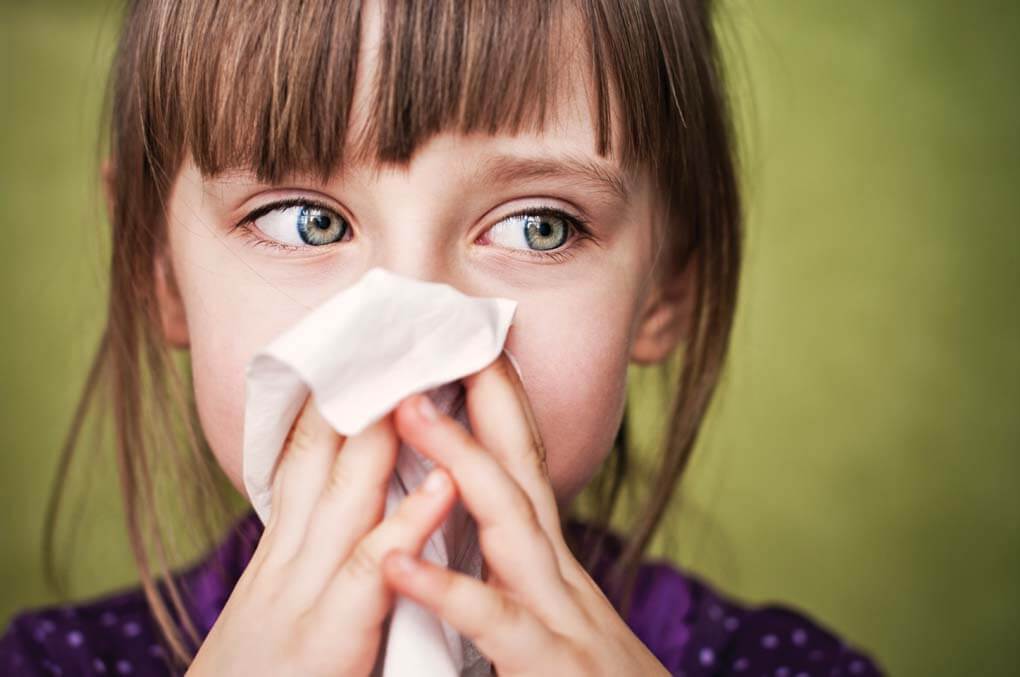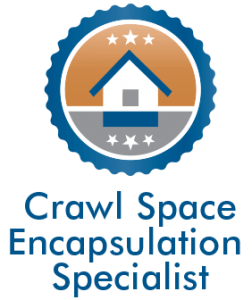The Stack Effect in Action
Due to the phenomenon known as the “Stack Effect”, as much as 50% of the air you breathe inside your home can come directly from the crawl space.
As hot air rises and escapes through the upper levels of your home, it is replaced by unpleasant crawl space air, creating a pulling effect that exposes you and your family to poor air quality in the living areas of your home.

Water intrusion and exterior moisture create wet, damp crawl space conditions. As the air warms, it is pulled up and out of the crawl space and into the living areas of the home. Often resulting in strange smells inside the home, high levels of indoor humidity and insect invasions.
What Happens in Your Crawl Space Affects the Air Quality Inside Your Home
Do you or your house guests notice strange, musty smells in your home? Chances are it’s coming from your crawl space.
But that’s just how older crawl space homes are supposed to smell, right? Well… not exactly.
Strange odors emanating from the crawl space aren’t just unpleasant and potentially embarrassing when you have guests over, they are also often an indicator of excess moisture underneath the foundation resulting in poor air quality inside your home.
Damp, humid crawl spaces provide ideal living conditions for mold growth, allergens and dust mites to thrive.
Poor Indoor Air Quality Should not be Ignored
Due to the stack effect, even homes without visible crawl space moisture problems can experience high levels of humidity inside the home. This is usually caused by water vapor passing through the crawl space and floors. Mold and condensation are two major problem points.
Condensation
Warm, moist air within a house is attracted to cold surfaces, including windows, mirrors, the corners of rooms, and inside closets. The buildup of condensation creates the perfect environment for mold spores and insects to thrive.
Mold
When crawl space seepage problems are left unresolved mold is allowed to thrive. Mold growth can expose you and your family to allergens if left unchecked.
High Levels of Humidity Inside the Home
Relative Humidity (RH) is the amount of water in the air relative to the maximum amount of water the air can hold
at a given temperature. The higher the RH, the higher the moisture content in the air.
Problems associated with high RH includes:
- High humidity levels
- Too much moisture in the air
- Higher energy costs
- Foul odors
- Harmful mold
Sharing Your Home with Unwanted Guests?
Poor indoor air quality caused by high indoor RH levels can lead to a host of problems that impact your home and the people living in it. Dust mites and insects thrive in areas with high RH levels, like crawl spaces. Dust mites are the leading cause of indoor asthma attacks according to the EPA.
What’s in the Air Matters
Moisture causes mold. Mold in any area of a home poses potential air quality problems, such as allergy like symptoms, unexplained headaches or other health issues.
According to the Environmental Protection Agency (EPA), allergic reactions can include but are not limited to sneezing, runny nose, red eyes and skin rashes.
A wet crawl space often causes musty smells and makes the home feel overly humid and uncomfortable. Crawl space humidity always migrates upwards towards the drier air in the living areas of the home. The elevated humidity can contribute to higher heating and cooling costs and negatively affect the value of your home.
To address mold problems and musty smells in the crawl space, the water problem must be repaired.
Breathe Easy. Call  Olshan
Olshan
The good news is that indoor air quality can be improved. By incorporating an effective air quality strategy in conjunction with water management, Olshan can help eliminate the unfavorable conditions that exist inside your crawl space. Olshan offers industry-leading air exchange technologies and crawl space encapsulation to help correct poor crawl space air.
This allows you and your family to enjoy healthy, fresh air while transforming a damp, uncomfortable crawl space into a useful extension of your home.




 Olshan
Olshan